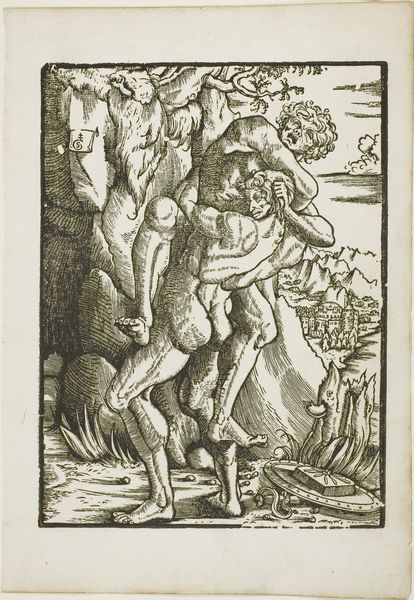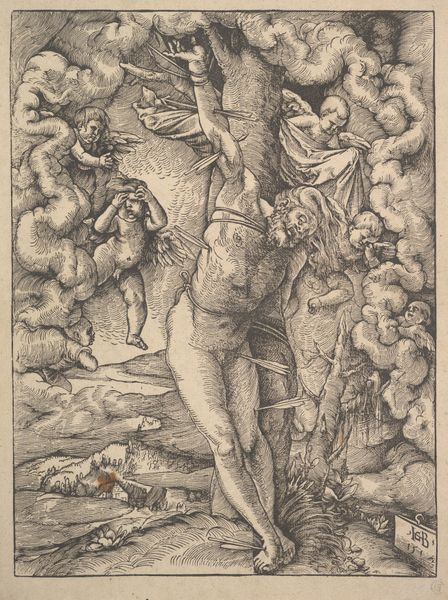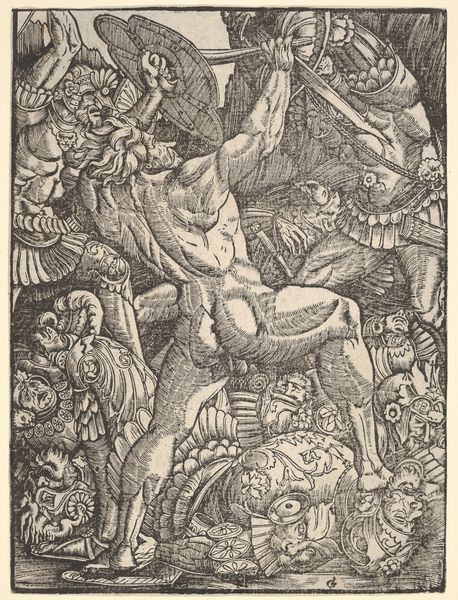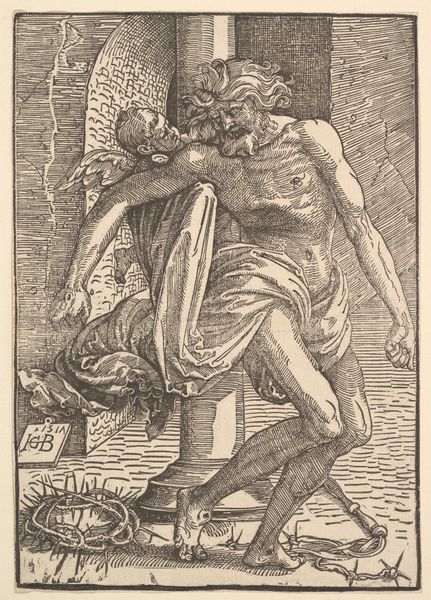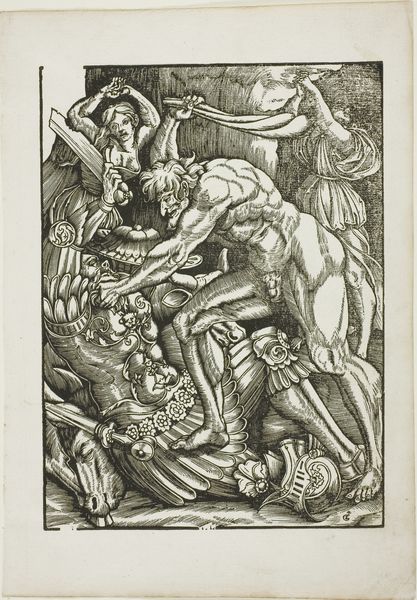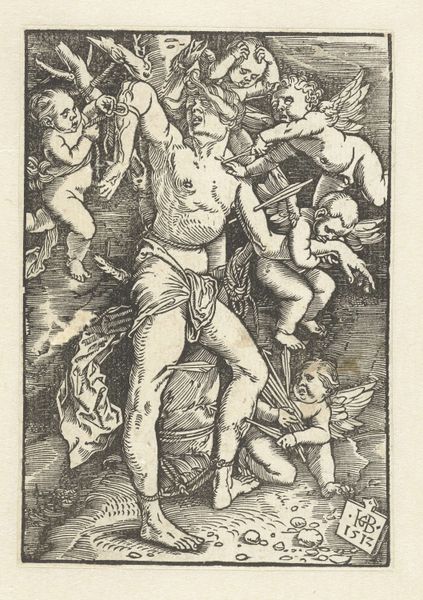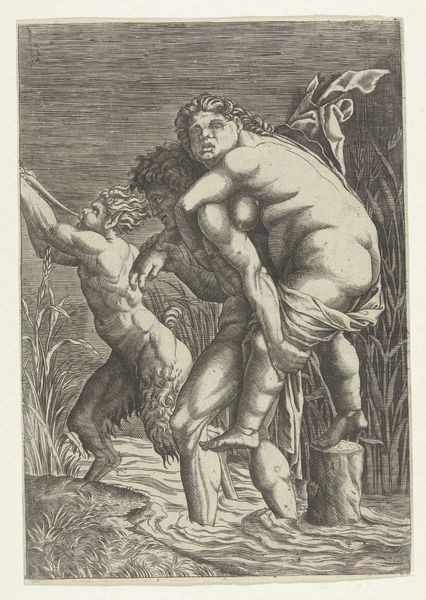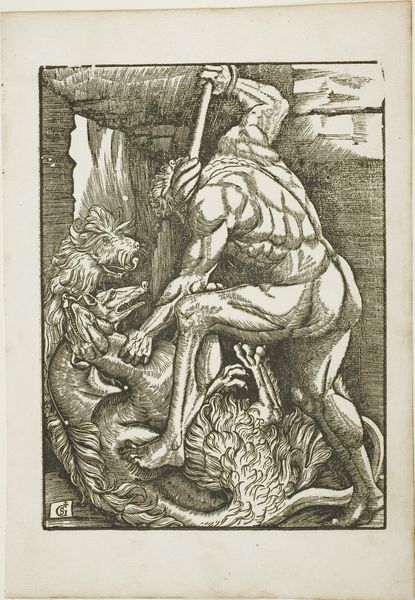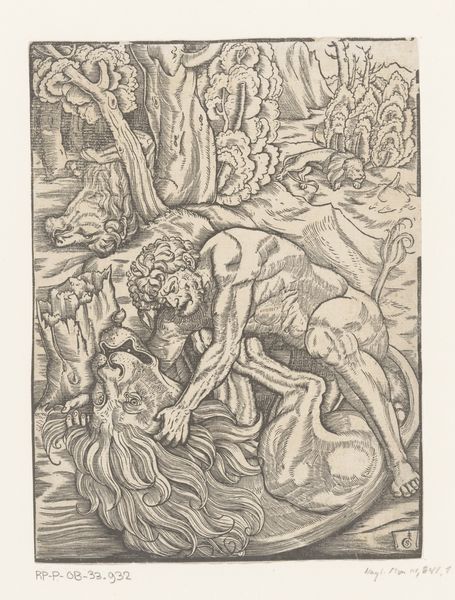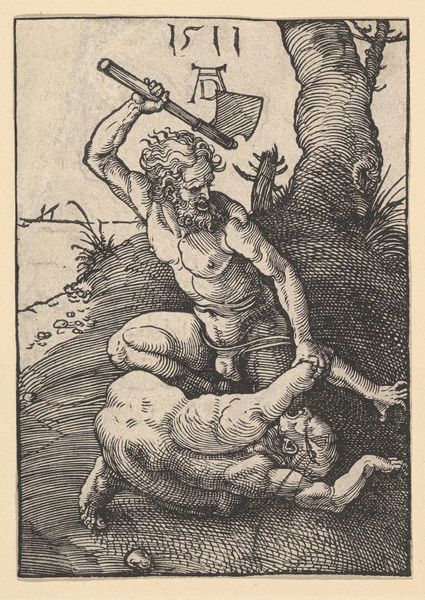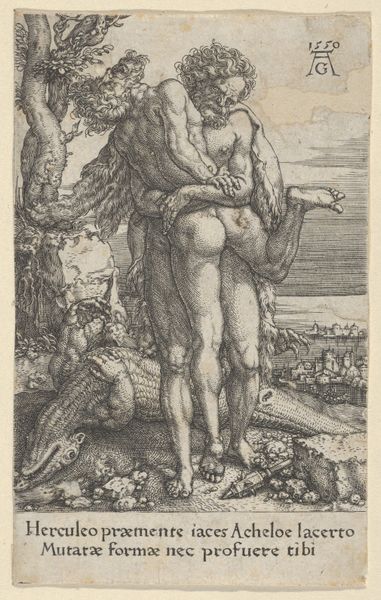
drawing, print, engraving
#
drawing
#
pen drawing
# print
#
figuration
#
line
#
history-painting
#
northern-renaissance
#
engraving
Dimensions: sheet (trimmed to block): 19.6 × 14.7 cm (7 11/16 × 5 13/16 in.)
Copyright: National Gallery of Art: CC0 1.0
Curator: Look at this dramatic print titled "Hercules and Antaeus," made around 1528. Editor: There's an intense struggle captured here. The lines are so assertive, creating this powerful sense of straining muscles and raw energy. Who created this striking visual? Curator: It’s attributed to Gabriel Salmon. Examining it, the production process reveals an engraving—likely multiple stages of etching and meticulous tooling to get such contrast in blacks and hatched lines. Prints like these allowed for wider circulation of imagery in the 16th century, offering accessibility across different social classes. Editor: That circulation is interesting, and also consider how this reflects the narratives circulating about masculinity, power, and the ‘civilized’ versus the ‘uncivilized’ world. Hercules, representing order, overcomes Antaeus, who draws his strength from the earth—nature, and the maternal figure of Gaia. This speaks to colonial power dynamics, and ideas about controlling resources, both human and natural. Curator: Exactly! And notice the level of detail in their bodies, particularly the bulging muscles and distressed expressions. This wasn’t a quick process. Consider the time and labor invested in making the matrix, not to mention the cost of materials like metal plates, ink, and paper, along with the printing press itself. The means of producing and consuming the art became intertwined in a very tactile way for viewers of the time. Editor: And beyond that, let's address the artistic lineage embedded in such works. It speaks of artistic patronage where classical narratives become fodder for political allegory, reinforcing specific ideologies. It prompts a question about the role of art as an ideological apparatus of its time, where this myth reinforces male dominance and colonial ambition under the guise of heroic virtue. Curator: By unpacking this image and thinking about the materials, labor, and methods used in its production, we gain access to understanding its moment in time. These historical considerations and their material realities highlight not only Salmon's process, but his role in perpetuating stories central to the Northern Renaissance mindset. Editor: Yes, reflecting on those questions reminds us of the importance of deconstructing those seemingly timeless narratives. Hercules is a lasting cultural icon, but one with far-reaching and often troublesome roots. This analysis underscores how such an image perpetuates enduring power structures, impacting our perception of heroism today.
Comments
No comments
Be the first to comment and join the conversation on the ultimate creative platform.
